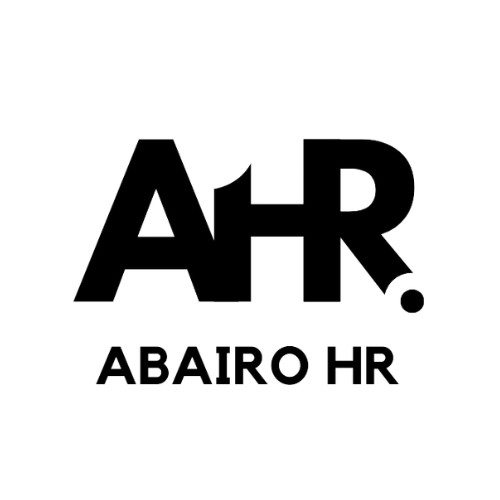The Role of Continuous Feedback in Employee Development
Continuous feedback is a powerful tool for employee growth and development. Unlike traditional annual reviews, ongoing feedback provides employees with regular insights and guidance, helping them stay aligned with organizational goals and enhance their performance. In this blog, we’ll explore the importance of continuous feedback and how it drives employee success.
Employee development is an ongoing journey that requires consistent support, guidance, and direction. Relying solely on annual performance reviews can leave employees feeling disconnected from their progress and unaware of areas for improvement. Continuous feedback bridges this gap by offering real-time insights that help employees adjust, grow, and align with company objectives.
Implementing a culture of continuous feedback not only enhances individual performance but also strengthens the overall organization by fostering transparency, engagement, and a growth mindset. Organizations that embrace ongoing feedback see higher retention rates, increased productivity, and more engaged employees.
In this blog, we’ll discuss the key benefits of continuous feedback, best practices for implementation, and how it can transform employee development.
Understanding Continuous Feedback
Continuous feedback refers to the practice of providing employees with regular, timely, and constructive input on their performance and development. It moves beyond periodic reviews to create a culture of constant learning and improvement.
Why Is Continuous Feedback Important? Ongoing feedback helps employees understand their strengths, identify areas for improvement, and stay engaged with their work. Organizations that implement continuous feedback report increased job satisfaction and stronger alignment with business objectives.
Key Statistics:
- According to Gallup, employees who receive daily feedback are three times more engaged than those who receive annual reviews.
- A Harvard Business Review study found that 72% of employees feel their performance would improve with more feedback.
Key Elements of an Effective Continuous Feedback System
1. Real-Time Feedback
Providing immediate feedback helps employees correct mistakes and reinforce positive behaviors promptly.
Best Practices:
- Use digital platforms to facilitate instant feedback.
- Encourage managers to provide timely responses.
- Offer constructive and actionable suggestions.
Example: A tech company implemented a feedback app that allowed peers to provide instant performance comments, leading to a 20% increase in productivity.
2. Two-Way Communication
A feedback system should encourage open dialogue between employees and managers to foster trust and mutual understanding.
Best Practices:
- Encourage employees to share their thoughts and concerns.
- Conduct regular one-on-one meetings.
- Foster an open-door policy for feedback exchange.
Example: A retail business adopted bi-weekly check-ins that resulted in better team collaboration and problem-solving.
3. Goal-Oriented Feedback
Linking feedback to specific goals ensures that employees stay focused and aligned with business objectives.
Best Practices:
- Align feedback with short-term and long-term goals.
- Provide feedback based on SMART criteria.
- Track progress and make necessary adjustments.
Example: A healthcare organization tied continuous feedback to patient satisfaction goals, leading to a 15% improvement in service quality.
4. Positive Reinforcement
Recognizing and celebrating achievements motivates employees and boosts morale.
Best Practices:
- Acknowledge small and big wins equally.
- Provide public recognition when appropriate.
- Encourage peer recognition programs.
Example: An e-commerce company implemented a monthly “shout-out” initiative, improving employee engagement by 25%.
5. Actionable Insights
Feedback should provide employees with clear and actionable steps to improve their performance.
Best Practices:
- Use data-driven insights to guide feedback.
- Set up clear action plans.
- Follow up regularly to track progress.
Example: A finance company used performance analytics to personalize feedback, resulting in a 30% improvement in efficiency.
The Risks of Not Providing Continuous Feedback
Without regular feedback, organizations may face:
- Low Engagement: Employees may feel undervalued and disconnected.
- Poor Performance: Lack of direction can lead to decreased productivity.
- Higher Turnover: Employees without guidance may seek opportunities elsewhere.
Steps to Implement a Continuous Feedback Culture
- Train Managers: Equip leaders with the skills to provide constructive feedback.
- Leverage Technology: Use tools and platforms to streamline feedback collection.
- Encourage a Growth Mindset: Foster a culture of learning and improvement.
- Make Feedback Routine: Incorporate feedback into daily operations.
- Measure Impact: Regularly assess the effectiveness of the feedback process.
Continuous feedback is a game-changer for employee development and organizational success. By fostering open communication, aligning feedback with goals, and providing actionable insights, companies can create a dynamic work environment where employees thrive.
“Ready to implement continuous feedback in your organization? Start today and unlock your team’s full potential.”
Let’s Start Something new
Say Hello!
Let’s get the ball rolling! Just fill out the details below, and one of our HR experts will get back to you faster than you can think of an HR question.
